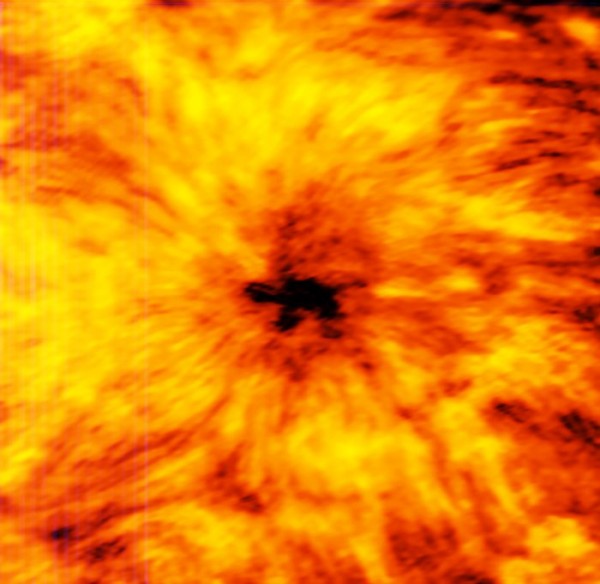By Ana Verayo, | January 20, 2017

This ALMA image of an enormous sunspot was taken at a wavelength of 1.25 millimetres. (ALMA)
One of the world's most powerful telescopes has stared into the sun and taken a series of stunning photos, revealing direct observations of the sun along with close-ups of a massive sunspot twice the size of the Earth.
For the first time, the ALMA (Atacama Large Millimeter/submillimeter Array) telescope in Chile peered into this blazing fireball and captured amazing imagery, according to the European Southern Observatory.
Like Us on Facebook
Telescopes from Earth require protection from the sun's intense radiation. ESO's Submillimeter Telescope based in Chile caught fire when it was accidentally pointed in the sun's direction.
ALMA, on the other hand, is designed to directly observe straight into the sun with the help of a special antennae that can look into the sun's chromosphere above its photosphere (which is the sun's visible layer).
The telescope uses radio interferometry, which is a method involving 66 antennae that can take an image of any cosmic body similar to what a powerful telescope can do.
One of the unique features of ALMA's new imagery of the sun is this massive sunspot where intense magnetic activity is cooler than its environment making it almost black. ALMA obtained two images of this sunspot at 1.25-millimeter spectrum and three millimeters.
Using a special method known as "fast scanning," ESO scientists were able to use a single antenna to image a full disc of the sun at 1.25 mm under a few minutes, revealing maps of temperature distribution in the chromosphere over this sunspot and other regions of the sun.
Apart from the ALMA telescope, NASA's Solar Dynamics Observatory has also captured amazing images of the sun. However, ALMA's goal is to provide a complete analysis of the electromagnetic spectrum of the sun. ESO scientists say that understanding the heating and dynamics in the sun's chromosphere are the key areas of research in the future for ALMA.
-
Use of Coronavirus Pandemic Drones Raises Privacy Concerns: Drones Spread Fear, Local Officials Say

-
Coronavirus Hampers The Delivery Of Lockheed Martin F-35 Stealth Fighters For 2020

-
Instagram Speeds Up Plans to Add Account Memorialization Feature Due to COVID-19 Deaths

-
NASA: Perseverance Plans to Bring 'Mars Rock' to Earth in 2031

-
600 Dead And 3,000 In The Hospital as Iranians Believed Drinking High-Concentrations of Alcohol Can Cure The Coronavirus

-
600 Dead And 3,000 In The Hospital as Iranians Believed Drinking High-Concentrations of Alcohol Can Cure The Coronavirus

-
COVID-19: Doctors, Nurses Use Virtual Reality to Learn New Skills in Treating Coronavirus Patients








